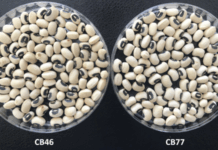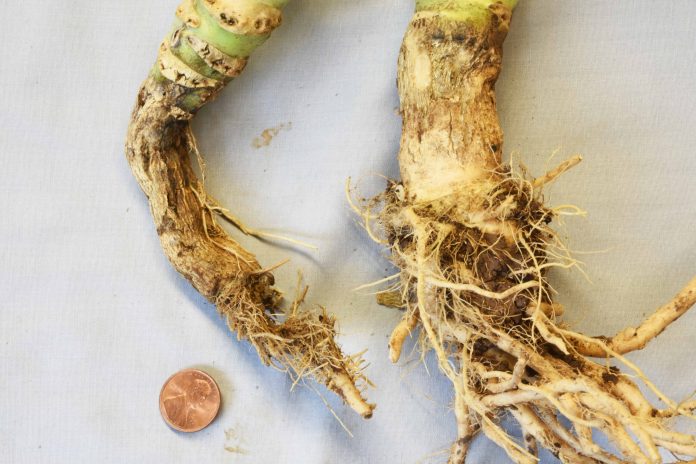
It is highly likely that growers, PCAs and other field professionals are familiar with the word “Pythium”. Pythium is the name of a soilborne, fungus-like organism that is notorious for primarily causing seedling diseases. Pythium is notable because many row crops are susceptible to it, the pathogen is very widely distributed and occurs in most cropped ground, and despite the use of IPM tools and strategies, Pythium problems can still show up in row crop production systems.
What is Pythium?
Pythium is a fungus-like organism. Previously considered to be a true fungus, molecular studies in recent years indicate that Pythium—as well as closely related organisms like Phytophthora and downy mildew—is more closely related to brown algae and diatoms. Formally, therefore, Pythium species are no longer part of the fungal taxonomic group but are classified in the kingdom Chromista, or Stramenopila. The Pythium genus contains over 200 species, most of which are not plant pathogens. There are Pythium species that are pathogens of animals (some of which can infect humans), and many species are saprophytes and only grow on dead and decaying organic material. Pythium species are mostly found in soil environments but are also present in aquatic habitats.
Plant pathogenic Pythium species are well equipped to cause problems on row crops. Most of these species form resilient, thick-walled sexual spores (oospores) that can withstand periods of unfavorable dry and warm conditions. These structures enable Pythium to persist in the soil for a long time. When favorable soil conditions are present, mostly in the form of abundant soil water, these Pythium organisms either produce hyphae that grow toward the roots or swimming spores (zoospores) that move through the soil water in search of susceptible plant tissues. Another feature that makes Pythium problematic for growers is the extremely fast growth rate of these organisms. Given suitable soil conditions, Pythium pathogens can rapidly grow from seed-to-seed, seedling-to-seedling and root-to-root.

Diverse Pythium Diseases
In contrast to many plant pathogens, Pythium causes several different types of problems on crops (Table 1). First, Pythium is a seed pathogen. Once placed in the ground, seed can be exposed to Pythium that is residing in the soil. If conditions are favorable for the pathogen, Pythium can invade and colonize the seed, causing it to rot before it can germinate. If the seed germinates, Pythium can cause a decay of the roots and shoots that just grew out of the seed. This early disease stage is often called damping-off. Damping-off is further divided into two phases. If the newly germinated seedling is infected so early and so severely that it dies before being able to break through the soil surface, this situation is called pre-emergent damping-off. However, post-emergent damping-off occurs if the diseased seedling is strong enough to emerge above the soil surface, only to succumb and collapse shortly afterwards. Collectively, seed decay, pre-emergent damping-off, and post-emergent damping-off can result in loss of plants very early in the production cycle, causing stand loss in the field.

Healthy seedlings that escape death at the seed and newly germinated stages remain vulnerable to this pathogen; established seedlings can still be infected and become stunted and die due to diseased roots and crowns. Older, established plants have escaped the damping-off phase that kills seedlings but can be subject to infections that prune back the roots, leading to reduced plant vigor and yield. For example, Pythium can cause late infections in cauliflower and result in weakened roots and poorly yielding plants. This soilborne pathogen can even cause a foliar blight of leaves and shoots, though this type of disease is not very common. Bits of soil carrying Pythium can be splashed or moved up onto foliage and cause blights on crops such as spinach and bean. Finally, the fleshy parts of some vegetable crops are subject to Pythium pathogens. If in contact with infested soil, cucurbit fruits, sweet potato storage roots and potato tubers can develop a soft, watery rot that will result in a non-marketable commodity.
Of the hundreds of Pythium species worldwide, relatively few species infect row crops. These plant pathogens can be conveniently placed into two categories. One group consists of Pythium species that have a relatively narrow host range and infect only a few crops, with those few crops tending to mostly be within a particular plant family. Examples are Pythium mastophorum, which primarily infects celery and parsley (Apiaceae family), and Pythium uncinulatum, which reportedly only causes significant disease on lettuce (Table 2). The second group contains Pythium organisms that have very large host ranges. The two main species, P. aphanidermatum and P. ultimum, both infect scores of plants, including dozens of vegetable and row crops.
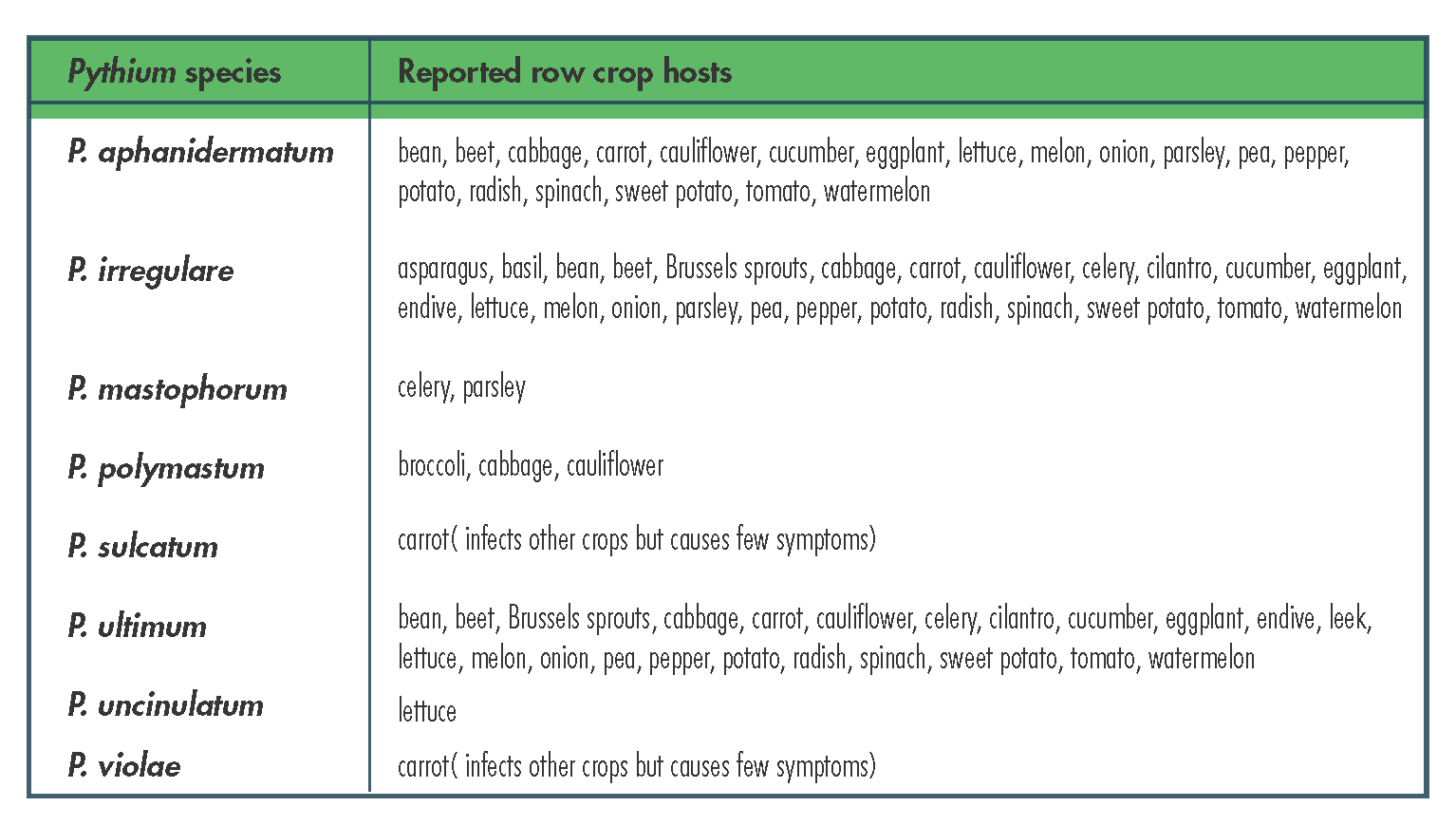
Disease Development Development of Pythium diseases is straightforward. Initial inoculum is almost always linked with infested field soils and associated soil water. Pythium is a soilborne pathogen that resides in the soil primarily as dormant resting structures. Pythium inoculum is not seedborne or airborne. For Pythium to become active, grow, and produce those swimming zoospores, the soil must be wet for prolonged periods. Once susceptible seed, seedlings, and other plant parts are in close contact with Pythium inoculum, infection can take place and disease will be initiated. If wet soil conditions persist and temperatures are optimum for the pathogen, disease losses can be significant.
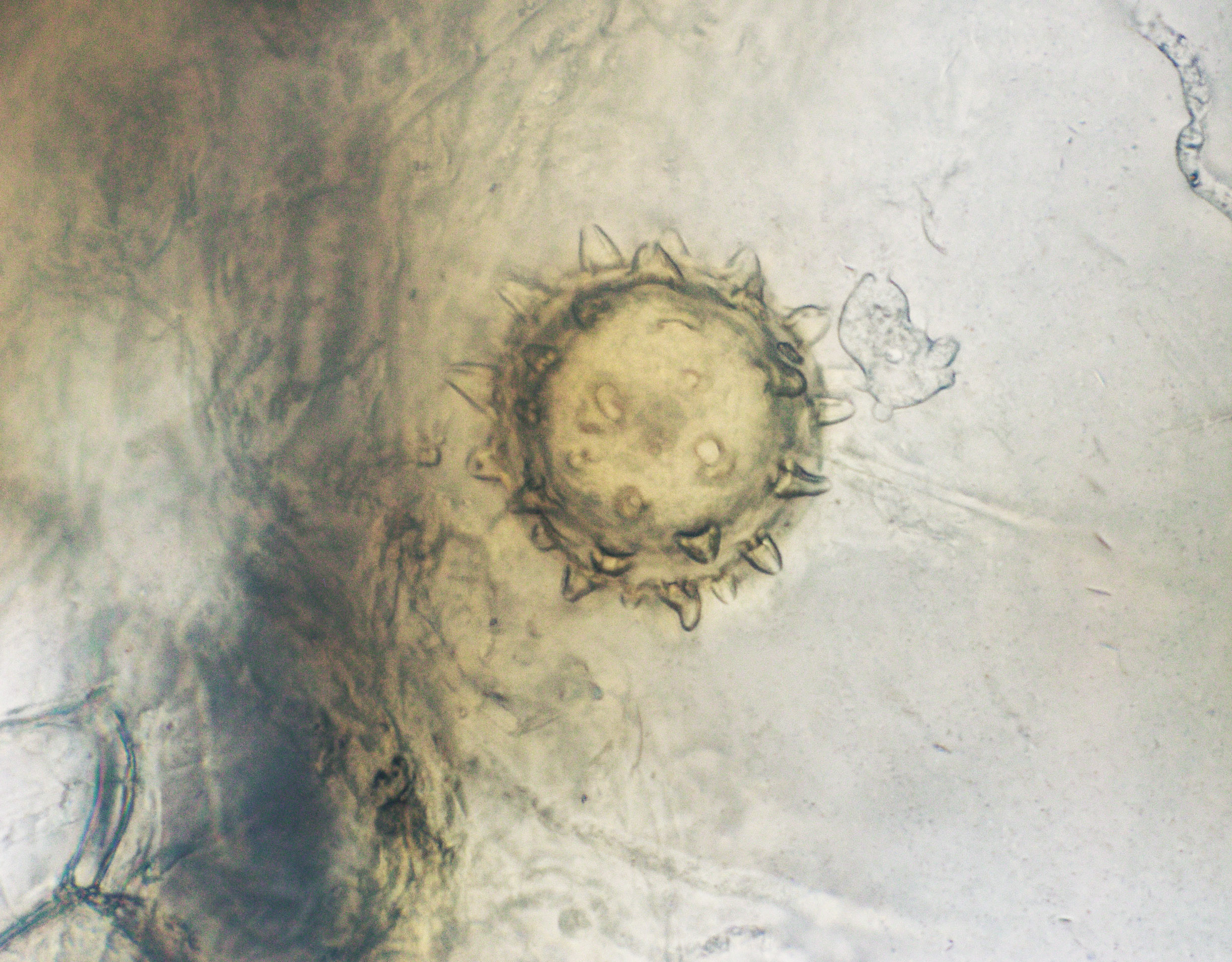
Diagnostic Considerations
Pythium is not the only soilborne pathogen that causes seedling damping-off and root rots of row crops. On spinach, damping-off and root rot can be caused by both Pythium and Fusarium; visually, one cannot distinguish between the symptoms caused by these two pathogens. Pythium and Phytophthora pathogens both cause dark, discolored roots of lettuce and cannot be differentiated in the field. Cauliflower transplants are susceptible to both Pythium and Rhizoctonia pathogens, both of which caused the roots to become discolored. Precise and accurate diagnosis of Pythium diseases will therefore require lab-based tests and assays.
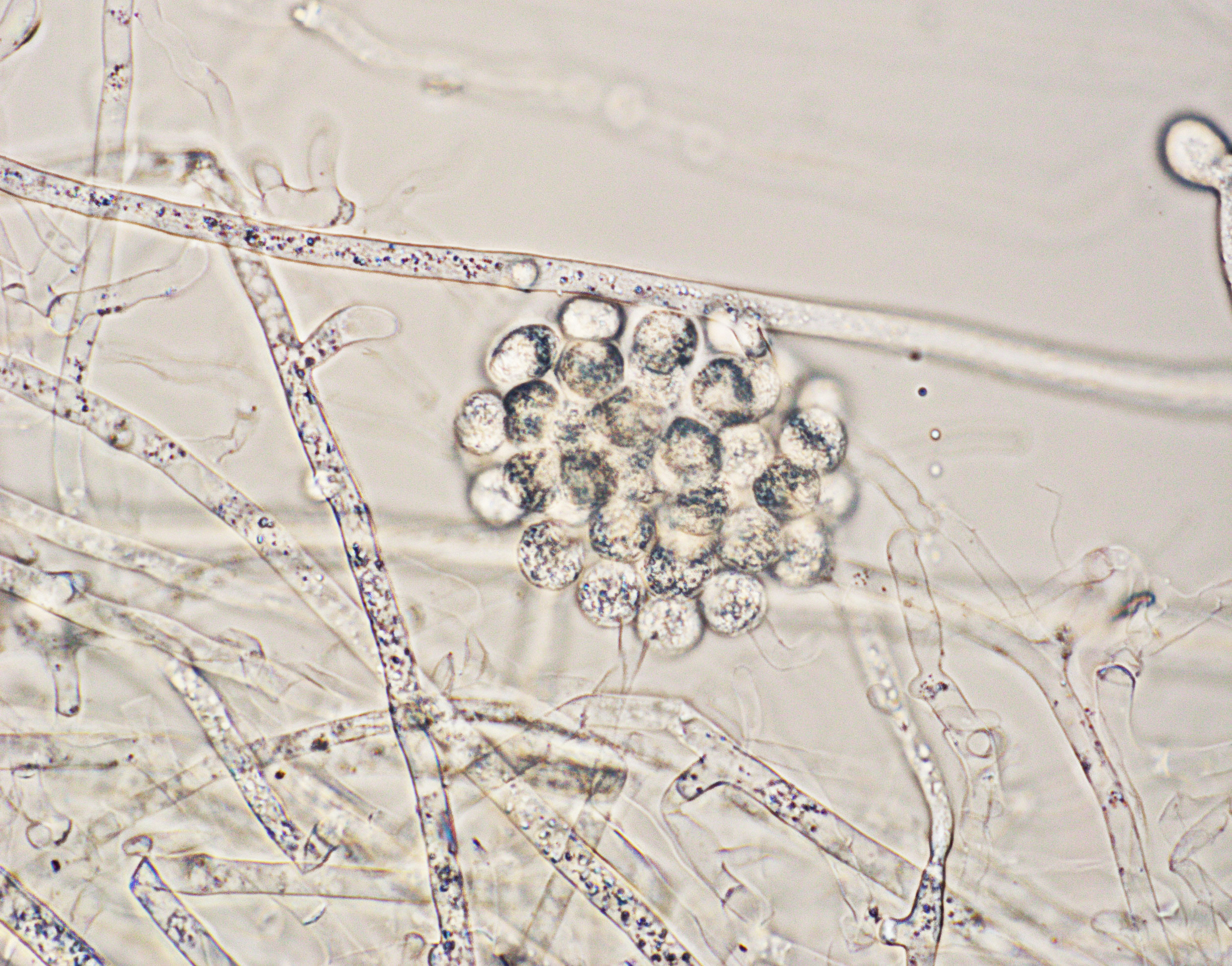
Managing Pythium
Controlling diseases caused by Pythium requires the implementation of IPM practices.
Site selection: Choose to plant in fields that do not have a history of Pythium problems and have well-draining soils.
Crop rotation: If Pythium is an issue, avoid planting the same susceptible crop in the infested field. Rotate to crops that are not known to be susceptible to the Pythium species present at that location. However, remember that some Pythium species have very broad host ranges (Table 2).
Irrigation management: Because the Pythium pathogen is so strongly dependent on wet soil conditions, carefully schedule and limit irrigations to prevent overwatered, saturated soils.
Time of planting: In some cases, moving the planting date to a different time of year may help reduce losses to Pythium. For example, depending on the Pythium species of concern, planting the crop in the warmer, drier summer may be preferred to seeding the crop in the cooler, wetter spring.
Fungicides: Plant seed treated with a fungicide that is active against Pythium. Note that the fungicides used to control Rhizoctonia or Fusarium have no effect on Pythium. For some crops, applying fungicides to the emergent crop may provide additional protection. The repeated use of products having the same mode of action can result in Pythium isolates that are insensitive (=resistant) to those products; therefore, IPM strategies will require that thought be given to deploying different fungicides.
Resistant or tolerant cultivars: Unfortunately, there do not appear to be any row crop cultivars that have genetic resistance to Pythium.












